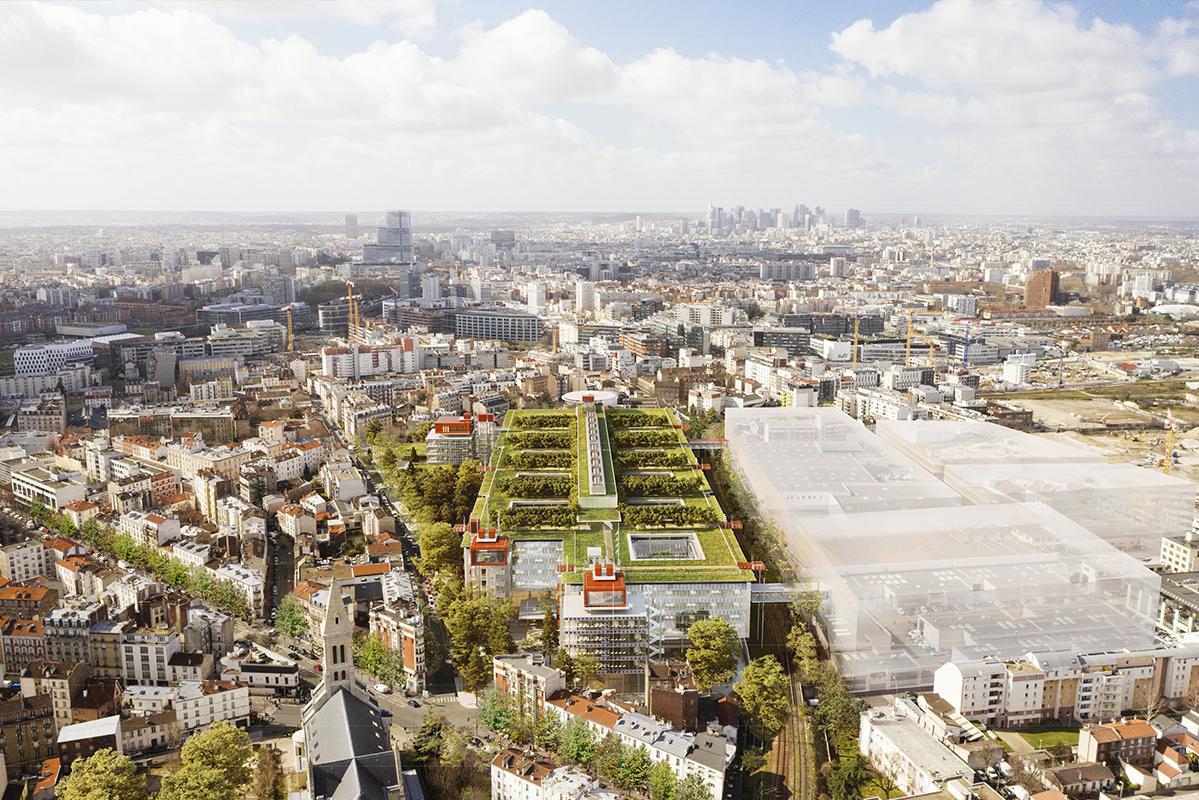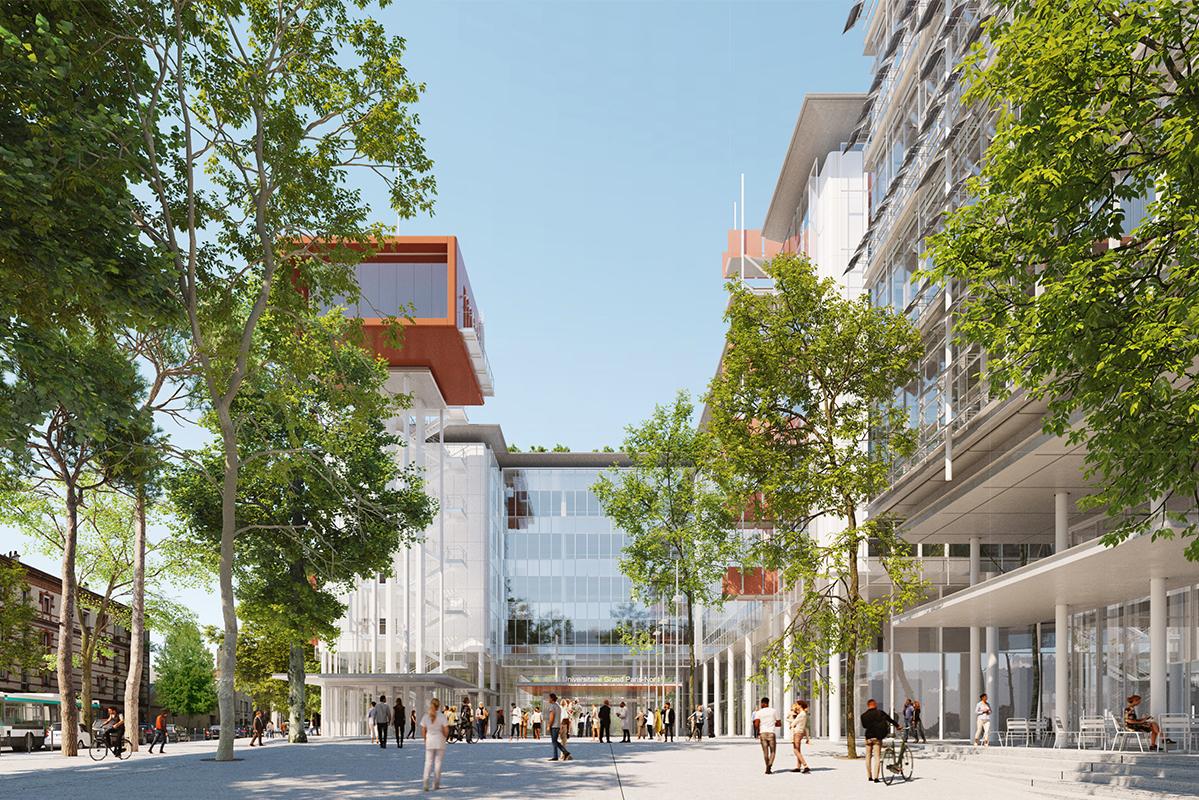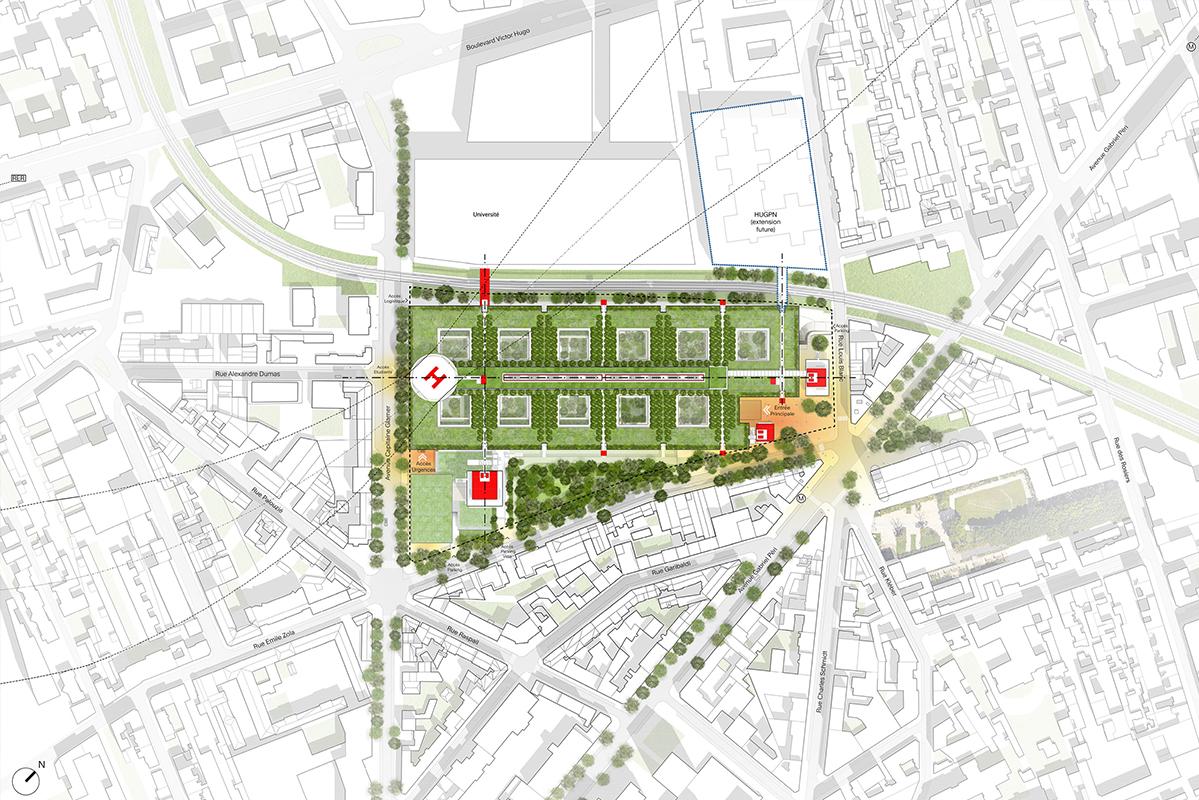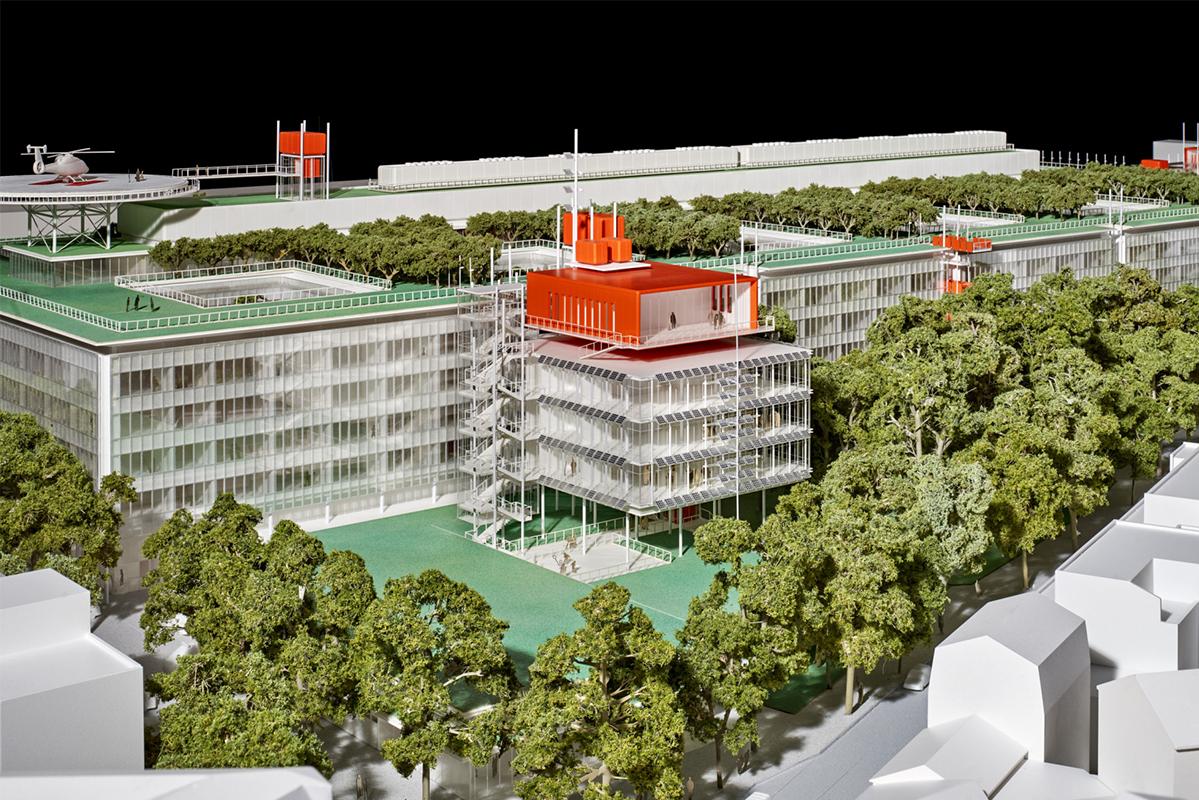Grand Paris Nord Hospital
Construction of a new teaching hospital campus, Hospitalo-Universitaire Grand Paris Nord (HUGPN), in Saint-Ouen
The Saint-Ouen Grand Paris Nord teaching hospital campus will unite, on a single site in Saint Ouen-sur-Seine, the medical activities of the Bichat (Paris 18) and Beaujon (Clichy) hospitals, a university structure combining the teaching and research activities in medicine for the University of Paris, and in oral medicine for the whole of the Ile de France region.
The architectural competition launched in 2019 is the largest hospital construction project initiated by the Parisian public hospitals in 20 years. The challenge is to project itself into Greater Paris, contributing to the changes in this economically and demographically dynamic region, but also to adapt to evolutions in the health system and to shape the healthcare of the future. It is due to be completed by 2028.
The winning project by the team RPBW / Brunet-Saunier / Ingérop / SETEC / T/E/S/S/ proposes a hospital that welcomes the city, with a clear and identifiable volume, a landmark in the urban space within which it takes its place. The building is compact, with a limited footprint in order to leave the edges of the site free for planting and paved areas in continuity with the entrance area. A dozen planted patio areas cross through the building. Largely glazed, the facades accentuate the idea of transparency and create visual links between exterior and interior.
The hospital’s roof terrace is planted with a variety of species and sheltered from noise from the street. The roof garden is a refuge open to all, healthcare workers, visitors and city dwellers, in the same spirit of porosity between these different communities. Accessible from the hospital as well as from the city, it forms a promontory that overlooks the surrounding buildings and provides wide, open views into the far distance.
The rational organisation of the campus ensures long-term adaptability in order to meet present and future healthcare requirements. The superimposition of fully fitted floors, neutral, reversible and bathed in natural light allows for flexible and spatial organisation and evolution of use.
One of the primary ambitions for the building envelope is to play an important role in meeting the target of 18kg of bio-sourced materials for each square metre of floor area, as well as in the considerable reduction of the carbon impact of materials used.
The design of the external facades and those on the patios is based on continuous glazed strips on a timber-framed or precast clad concrete spandrel panel and including bio-sourced insulation. These panels will support the fixed and opening windows and are protected by textured ceramic shingles and punctuated by metal screens which accentuate the repetitive grid of the facade. External adjustable solar shading with visible housing is fitted in front of the windows.
The facades of the ground floors and mezzanine level of the hospital are based on the principal of a single-skin envelope that efficiently meets user needs. It is a double-height curtain wall facade. This is set back from the main facade, providing passive protection which is supplemented by blinds.
The atrium is entirely glazed with a single-skin facade constituting a hanging structural steel frame, reinforced at each floor by a cable system forming a horizontal trellis structure that reinforces overall longitudinal stability. The glass panels, measuring around 2.4m by 4m, ensure visual comfort. Natural ventilation up through the atrium will be enabled by means of motorised openings in the lower and upper sections of the facade.




